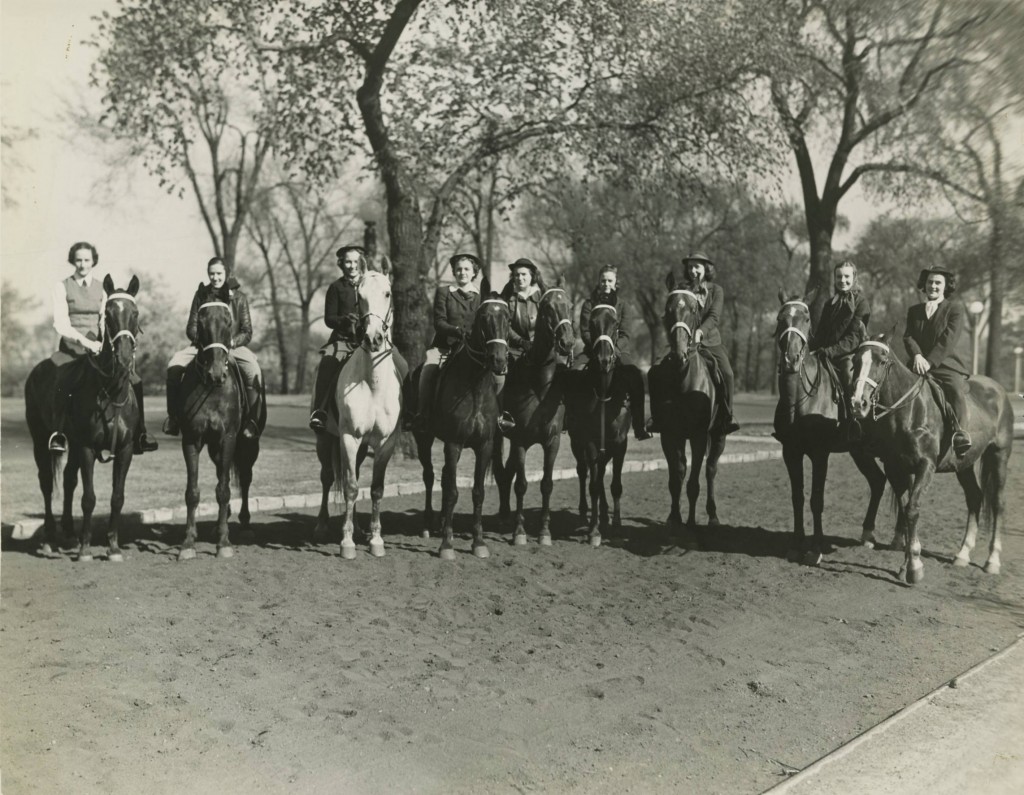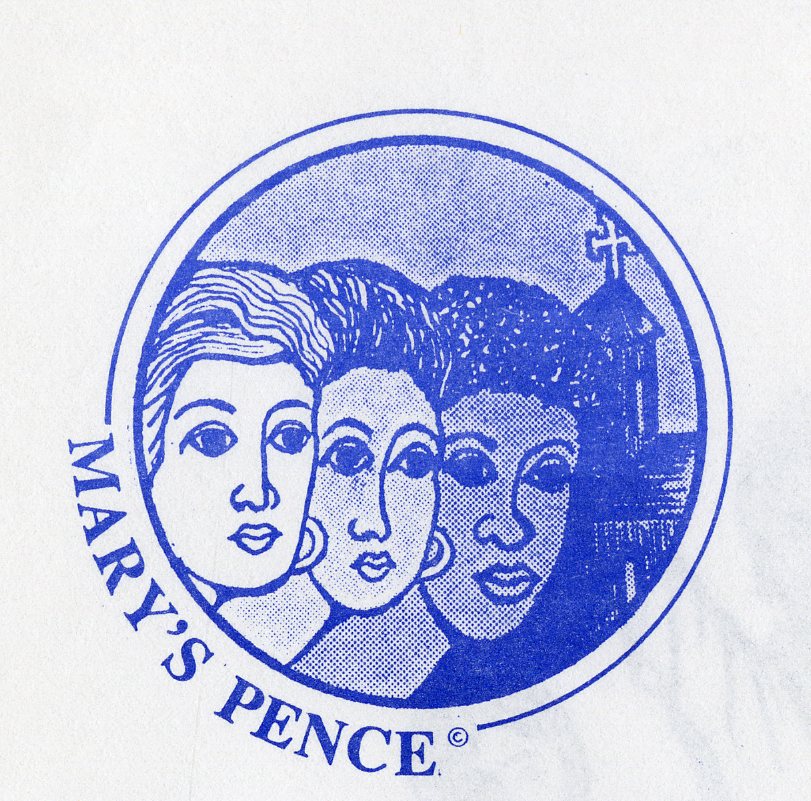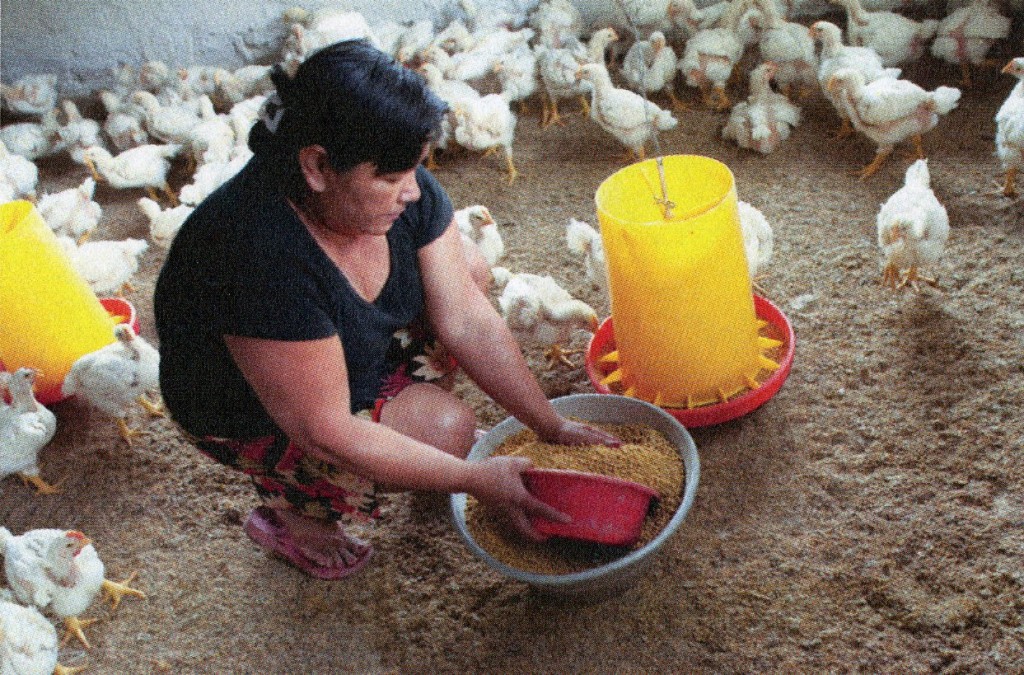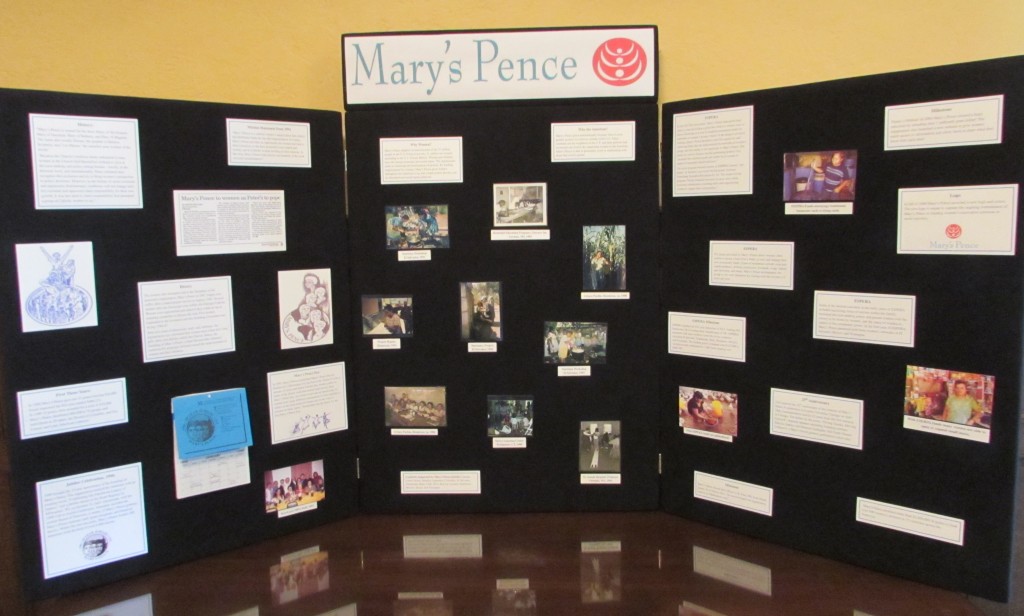Imagine a beautiful spring day in one of Chicago’s numerous parks. Perhaps you are jogging, enjoying your lunch break from work on a park bench, or simply strolling down various paths—taking in the landscape and enjoying the stretch of your legs. You view your surroundings and find the usual suspects: birds, flowers, trees, and a gaggle of collegiate women on horseback taking in the sites of the gorgeous day. Nothing out of the ordinary.

Photo of dozens of riders (some from Mundelein College Riding Club) on the Annual Breakfast Ride through Lincoln Park on November 1, 1940. Mundelein Photograph Collection.
In fact, up until the 1960s, this would not have been so unusual. Horseback riding was considered a popular form of exercise for many—including many students of Mundelein College. Mundelein College, a women’s Catholic liberal arts college, was founded by the Sisters of Charity of the Blessed Virgin Mary (BVMS) in 1929. When Mundelein opened its doors to students in the fall of 1930, horseback riding classes became a central part of its athletic program.
How did an urban college, housed in a skyscraper no less, provide the horses for these classes? A Chicago Tribune article states that during the early to mid-twentieth century, there were approximately 20 stables located near various Chicago Park District riding trails, housing as many as 100 horses. These horses could either be boarded, given a stall paid for by their owner for a monthly sum, or rented from the stable by the hour for riding. Most likely, the students of Mundelein chose to participate using one of those two options.
The first horseback riding classes offered to students began only a year after Mundelein’s opening and continued into the 1960s. The Skyscraper, Mundelein’s student newspaper, reported that 56 students of various skill levels enrolled in the two-hour weekly class. Students with more experience rode park trails while beginning riders held their first lessons in an indoor arena of a nearby riding academy. The journalist wrote that the course, “promises to be a popular one. By personal interview with the young women it becomes evident that there is fascination in the rhythmic hoof-beats of a horse.” The class could be taken for gymnasium credit and in some instances supplemented “regular” gymnastic course requirements.[1]
Some Mundelein students elevated the horse-related activities at the college. A student organization called the “Equestriennes,” more formally the Mundelein College Riding Club, planned an annual horse show that challenged members to compete in various events that not only highlighted their technical skill but also promoted showmanship. Events such as “musical chairs on horseback” and a costume race added unique flavor to the more traditional atmosphere of a schooling show.[2] In later years, the Equestriennes opened up entrants to high-school students for a special invitational class and charged admission to the proceedings.[3]
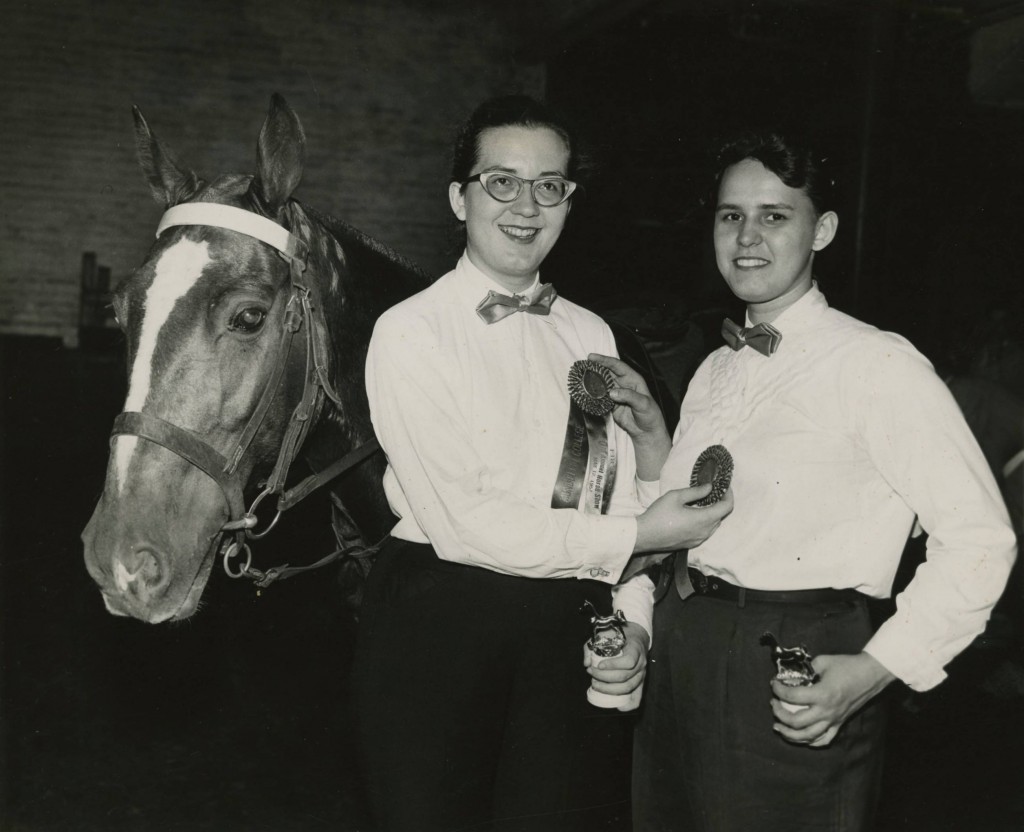
Horsemanship awards photo of 2 riders with horse posing with their trophies, undated. Mundelein Photograph Collection.
Looking through pictures of Mundelein students competing alongside their friends and horsey partners takes me back to my own equestrian past. I rode and competed for 14 years before putting up the spurs to pursue my M.A in Public History. I think it’s time to dust off the old breeches and get back on the saddle!
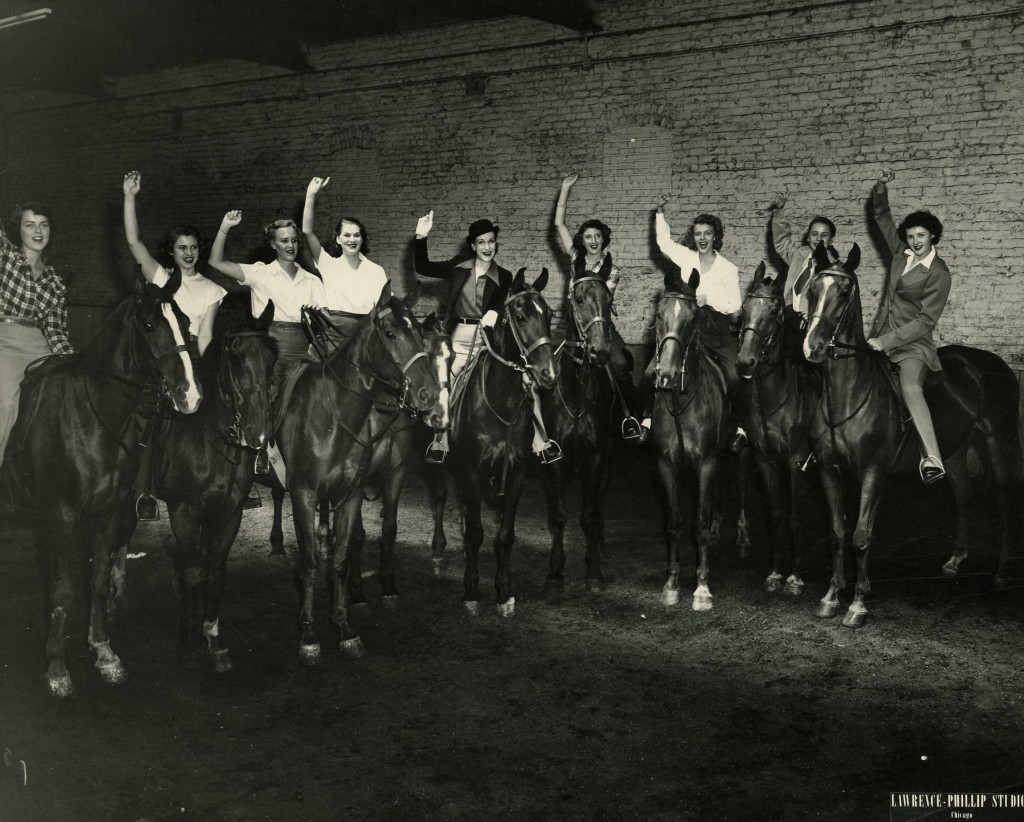
Group photo of Mundelein College Horseback Riding Club taken at Parkway Stables for the Annual Horse Show, 1940. Mundelein Photograph Collection.
[1] “Riding Classes Meet Each Week,” The Skyscraper, October, 15, 1931.
[2] “College Horse Show Includes Riding, Jumping Exhibition,” The Skyscraper, May 31, 1945.
[3] “Riders Vie for Trophies, Ribbons at Seventeenth Annual Horse Show,” The Skyscraper, May 6, 1957.
Ellen is a Graduate Assistant at the WLA and is in the first year of her M.A in Public History at Loyola University Chicago. Before moving to Chicago, Ellen was a Kindergarten teacher in Louisiana. She enjoys brunch, procedural dramas, and pugs.
Loyola University Chicago’s Women and Leadership Archives Blog is designed to provide a positive environment for the Loyola community to discuss important issues and ideas. Differences of opinion are encouraged. We invite comments in response to posts and ask that you write in a civil and respectful manner. All comments will be screened for tone and content and must include the first and last name of the author and a valid email address. The appearance of comments on the blog does not imply the University’s endorsement or acceptance of views expressed.

